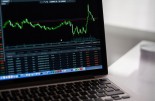Saxo Bank: The mysterious dissonance in equities
Saxo Bank: The mysterious dissonance in equities

By Peter Garnry, Head of Equity Strategy at Saxo Bank
Equities have entered a new paradigm as a function of the pandemic with valuations and real yields reaching levels we have not seen in recent history. Profit margins are at all-time highs in the US while commodities are close to new all-time highs. At the same time the UN’s food price index is already flirting with the highest levels in six decades and Europe is at the cusp of an energy shock.
The delta variant has caused global growth to slow and added more bottlenecks across manufacturing hubs in Asia. For now equities are shrugging it all off, with the second-longest rally with a drawdown of 5% or less since 1999.
Meanwhile capital expenditure in the mining and energy sectors is historically low, the developed world is doing an accelerated decarbonisation, excessive ESG focus is increasing costs for companies, and global manufacturing is being reconfigured creating a less smooth supply side in the global economy.
Rewind the clock 10 years and nobody would have thought these factors could coincide, but now they are. The big question is whether it is a sustainable equilibrium, or we are at the turning point of a bigger reset in financial markets?
US equity valuations are flashing red alert — or are they?
Global equity valuations — especially US equity valuations — are at absolute highs measured across a wide range of valuation metrics. The current valuation level is associated historically with a very low probability of a positive real rate return over the next 10 years.
In isolation it looks like another terrible inflated bubble in equities, but unlike the dot com bubble where the alternative was high real yields this time investors are offered no meaningful yield in bonds. In essence we have maxed out the wealth effect. It seems investors are willing to take a bet that, even at these elevated valuations, the future return will still be better than that of the bond alternatives.
While equity valuations look dangerously high in absolute terms the flipside of high valuations are historically low yields. According to estimates of the US equity risk premium (what equities are expected to deliver in excess returns over the risk-free rate) by finance professor Aswath Damodaran, the US equity risk premium is currently 4.6% compared to only 2% in 1999, the lowest observed equity risk premium in the US since 1960.
Remember, that an estimated equity risk premium of 4.6% could turn out to be zero return after inflation if we get a new period of sustained higher inflation.
Equity duration has risen dramatically over the past 10 years
With bond yields at historical lows the natural question is what will happen to equities if they start rising again? For bonds, the concept of duration is a well-known concept and can be measured quite precisely. One percentage point move in the US 10-year yield will approximately lead to a 7% decline for the 7-10Y Treasury bonds. Equity duration is a different animal.
We are using the methods of approximation described in the paper Implied Equity Duration: A New Measure of Equity Risk (Dechow et al., 2002). In addition we are adjusting earnings and book value for R&D expenses, which we capitalise and amortise over three years.
The adjustment for R&D makes Nasdaq 100 companies look less expensive as they spend 7.9% of revenue on R&D, compared to only 3.7% for the S&P 500 companies; R&D is also expensed immediately under the current accounting rules. Instead of a fixed cost of equity as used in Dechow et al., we use a dynamic cost of equity which is a function of the current interest rate level.
As our estimates for equity duration show, equities have in theory become much more sensitive to interest rates in recent times, compared to 10 and 20 years ago.
We see clearly that the interest rate sensitivity explodes after the Great Financial Crisis, and as interest rates went negative in Germany the implied equity duration has risen dramatically in Europe. Simultaneously, global debt has increased to 356% of GDP and house prices have hit new records. Everywhere you look, everything has become sensitive to where interest rates go, and itself that limits how high interest rates can go to cause severe stress on the system.
Equity duration is not an exact measurement as it is with fixed income due to the lack of a finite period of cash flows. Added to that, all parameters in estimating equity durations come with great uncertainty. Another way to look at equity duration is to plot P/E levels on the MSCI USA Index vs US real yields (the US 10-year yield minus the 10-year break-even yield).
The current valuation level measured on P/E has not been seen since the dot com bubble, but unlike today’s negative real yields, back then real yields were above 4%. Can negative real yields explain all of the rise in equity valuations?
Back in 2012 and early 2013, before the famous Bernanke tapering talk, real yields were almost as negative as today, but equity valuations were half of their current level. The main differences between today and 2012 are a more mature equity rally which has bolstered investor confidence, along with the recent post-pandemic rebound due to excess fiscal stimulus.
These factors may have caused investors to extrapolate growth at a high level, justifying the high equity valuations. More retail investors are also participating these days, chasing returns and narratives, and the quasi-monopolies in US technology have also seen their profits accelerate massively since 2012.
What the plot shows is that real yields may not have to move much before, under the right conditions, US equities will trade at much lower equity valuations. The observed variance in valuations at negative real yields is 2 to 3 times larger than for all other quantiles of real yields since 1998. In other words, the assumed risks for investors are high. A prediction from equity duration theory is that volatility and idiosyncratic risk rise with equity duration.
In other words, we expect volatility to go up from here and especially for the lofty equity valuation segment in technology.
So which type of companies are most sensitive to rising interest rates? Theory predicts that companies with low return on equity (or even negative), high growth rates, or high valuations have the highest equity duration. Our Bubble stocks equity theme basket is clearly the subset of equities we expect to have the highest sensitivity to interest rates, combined with private equity firms, real estate and high valuation IPOs.
While equity markets are calm, growth investors should start now to balance their portfolios with defensive and low-duration equities such as commodities and high-quality companies with high return on equity and below-average equity valuations.
Exceptional US companies
While US equity valuations are high they are not high without reason. One factor is the low real yields, but that could also be said of Europe and here we do not observe the same equity valuations.
Part of the explanation is that US companies have a significantly higher return on equity, currently at 17.1% compared to 11.3% in Europe, and as we have described in research notes, US companies on average have more stable earnings and grow faster due to their higher share of digital companies in public markets.
The high return on equity for US companies predicts that even with higher valuation levels today, US equities could outperform European equities.
Let’s say that US and European companies deliver the current return on equity each year over the next five years: even if US equities today are 25% more expensive on price-to-book and revert to European equity valuation levels after five years, US equities would have generated 29% more return over that period. So it should be clear for investors that you need very good arguments for not still being overweight on US equities.
Inflation and the margin squeeze
The biggest risk to economies, financial markets and equities is inflation. It holds the key to upset the entire structure in place since 2008. Policies are being implemented globally as if we have a demand shock, but we are currently facing a supply side shock due to the pandemic, lack of investments in the physical world, and an accelerated decarbonisation through electrification and renewable energy.
These forces are putting enormous pressure on commodity prices and our view is that the green transformation combined with the current policy trajectory will sow the seeds of a commodity super-cycle that will last for a decade.
In addition policies in the developed world and China will increasingly address inequality to avoid social unrest, which will mean higher taxes on corporates and capital, supporting higher wage growth for low-income individuals. The combined effect could cause inflation to run higher for longer and above the 2.3% average in the US since late 1991.
One conundrum is that since the world has become very sensitive to interest rates, what will central banks do if inflation remains above average for a long time? Either they raise rates and cause pain to our indebted economy, or they stay put and let real yields go even more negative. Could equities enter an outright melt up scenario under these conditions? It is not unthinkable.
The flipside of rising commodities and wage growth is profit margins in the corporate sector. S&P 500 has just hit its highest profit margin since 1990 and market forces, if not broken, should begin to cause a mean reversion in profit margins.
This will act as a drag on earnings growth unless nominal growth remains high, but for that to happen more fiscal stimulus is needed and the pandemic needs to end.
Equities are priced for perfection and a world that will not change, extending the trends for the past 10 years. But if this time is different, then equity investors are about to undergo outcomes none have seen in many decades. We will end our equity outlook with the words that, while equities are expensive, there are no attractive alternatives for the long-term investor.
Inflation and interest rates are the real risks now for equity investors and we recommend that equity portfolios think about equity duration and lower it now while equity markets are calm.










